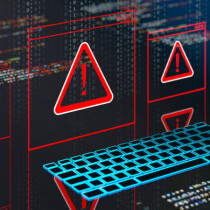New W32.Sircam.worm is loose and trickier then Code Red worm
W32.Sircam.Worm@mm arrives with a random subject line, which will be a file name of a document in the users computer. The worm tends to target office documents such as Excel and Word and will attached that document to an email, which is sent to everyone in the user's address book.
The worm is particularly dangerous because it cannot be identified by the subject line and message, therefore filtering for subject lines and attachments is ineffective, according to Symantec's David Banes.



































































